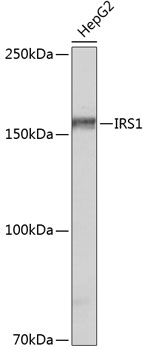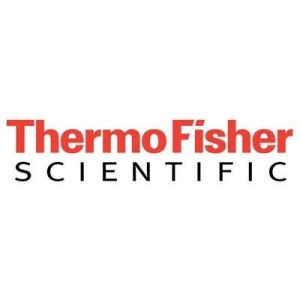Shop
Showing 80001–80050 of 163349 results
-

Iron Metal, Reduced, 100 Mesh, Powder
$1,611.08 Add to cart View Product DetailsIron Metal, Reduced, 100 Mesh, Powder
-

Iron Metal, Reduced, Powder, Reagent
$64.26 Add to cart View Product DetailsIron Metal, Reduced, Powder, Reagent
-

Iron Metal, Reduced, Powder, Reagent
$138.55 Add to cart View Product DetailsIron Metal, Reduced, Powder, Reagent
-

Iron Metal, Reduced, Powder, Reagent
$646.48 Add to cart View Product DetailsIron Metal, Reduced, Powder, Reagent
-

Iron Metal, Reduced, Powder, Reagent
$456.40 Add to cart View Product DetailsIron Metal, Reduced, Powder, Reagent
-

Iron Metal, Reduced, Powder, Reagent
$1,473.35 Add to cart View Product DetailsIron Metal, Reduced, Powder, Reagent
-

Iron Metal, Reduced, Powder, Reagent
$1,032.09 Add to cart View Product DetailsIron Metal, Reduced, Powder, Reagent
-

Iron Metal, Reduced, Powder, Reagent
$2,969.98 Add to cart View Product DetailsIron Metal, Reduced, Powder, Reagent
-

Iron(II) Acetate
$70.63 Add to cart View Product DetailsIron(II) Acetate
-

Iron(II) Acetate
$203.11 Add to cart View Product DetailsIron(II) Acetate
-

Iron(II) Gluconate, Hydrate
$71.93 Add to cart View Product DetailsIron(II) Gluconate, Hydrate
-

Iron(II) Gluconate, Hydrate
$182.93 Add to cart View Product DetailsIron(II) Gluconate, Hydrate
-

IRP2 Rabbit mAb
$103.04 Add to cart View Product DetailsMonoclonal Antibodies
-

IRP2 Rabbit mAb
$264.04 Add to cart View Product DetailsMonoclonal Antibodies
-

IRP2 Rabbit pAb
$86.94 Add to cart View Product DetailsPolyclonal Antibodies
-

IRP2 Rabbit pAb
$239.89 Add to cart View Product DetailsPolyclonal Antibodies
-

IRS1 Rabbit mAb
$264.04 Add to cart View Product DetailsMonoclonal Antibodies
-

IRS1 Rabbit mAb
$103.04 Add to cart View Product DetailsMonoclonal Antibodies
-

IRS1 Rabbit pAb
$86.94 Add to cart View Product DetailsPolyclonal Antibodies
-

IRS1 Rabbit pAb
$239.89 Add to cart View Product DetailsPolyclonal Antibodies
-

IRS2 Rabbit mAb
$119.14 Add to cart View Product DetailsMonoclonal Antibodies
-

IRS2 Rabbit mAb
$296.24 Add to cart View Product DetailsMonoclonal Antibodies
-

IRS2 Rabbit pAb
$86.94 Add to cart View Product DetailsPolyclonal Antibodies
-

IRS2 Rabbit pAb
$239.89 Add to cart View Product DetailsPolyclonal Antibodies
-

Irsogladine maleate, NeuroPure
$215.58 Add to cart View Product DetailsIrsogladine maleate, NeuroPure
-

Irsogladine maleate, NeuroPure
$59.29 Add to cart View Product DetailsIrsogladine maleate, NeuroPure
-

ISA for Bromide, Cadmium, Chloride, Cupric, Iodide, Sulfide, Thiocyanate Electrodes, 475 mL
$119.78 Add to cart View Product DetailsISA for Bromide, Cadmium, Chloride, Cupric, Iodide, Sulfide, Thiocyanate Electrodes, 475 mL
-

ISA for Carbon Dioxide Electrode, 475 mL
$141.04 Add to cart View Product DetailsISA for Carbon Dioxide Electrode, 475 mL
-

ISA for Fluoroborate, Nitrate, Perchlorate Electrodes, 475 mL
$119.78 Add to cart View Product DetailsISA for Fluoroborate, Nitrate, Perchlorate Electrodes, 475 mL
-

ISA for Potassium Electrode, 475, mL
$143.93 Add to cart View Product DetailsISA for Potassium Electrode, 475, mL
-

Isatin
$49.21 Add to cart View Product DetailsIsatin
-

Isatin
$122.38 Add to cart View Product DetailsIsatin
-

Isatin
$367.16 Add to cart View Product DetailsIsatin
-

iScope bi microscope, EWF 10x/22mm
$1,056.05 Add to cart View Product Detailseyepiece,EPLI 4/10/S40/S100x oil IOS obj
-

iScope bi microscope, EWF 10x/22mm
$1,170.72 Add to cart View Product Detailseyepiece, PLI 4/10/S40/S100x oil IOS obj
-

iScope Binocular Microscope with EWF 10x/22 mm Eyepieces, E-plan EPLi 4/10/S40/S100x Oil IOS Objectives
$1,289.61 Add to cart View Product DetailsiScope Binocular Microscope with EWF 10x/22 mm Eyepieces, E-plan EPLi 4/10/S40/S100x Oil IOS Objectives
-

iScope Binocular Microscope with EWF 10x/22 mm Eyepieces, Plan phase PLPHi 10/20/S40/S100x Oil IOS Objectives
$2,376.36 Add to cart View Product DetailsiScope Binocular Microscope with EWF 10x/22 mm Eyepieces, Plan phase PLPHi 10/20/S40/S100x Oil IOS Objectives
-

iScope Binocular Microscope with EWF 10x/22 mm Eyepieces, Plan PLi 4/10/S40/S100x Oil IOS Objectives
$1,429.68 Add to cart View Product DetailsiScope Binocular Microscope with EWF 10x/22 mm Eyepieces, Plan PLi 4/10/S40/S100x Oil IOS Objectives
-

iScope Tinocular Microscope with EWF 10x/22 mm Eyepieces, E-plan EPLi 4/10/S40/S100x Oil IOS Objectives
$1,359.16 Add to cart View Product DetailsiScope Tinocular Microscope with EWF 10x/22 mm Eyepieces, E-plan EPLi 4/10/S40/S100x Oil IOS Objectives
-

iScope tri microscope, EWF 10x/20mm
$5,300.65 Add to cart View Product Detailseyepiece, PLPOLRI 5/10/20/S50x, w/camera
-

iScope tri microscope, EWF 10x/22mm
$1,112.97 Add to cart View Product Detailseyepiece,EPLI 4/10/S40/S100x oil IOS obj
-

iScope tri microscope, EWF 10x/22mm
$1,832.85 Add to cart View Product Detailseyepiece,EPLI 4/10/S40/S100x w/camera
-

iScope tri microscope, EWF 10x/22mm
$1,959.39 Add to cart View Product Detailseyepiece, Plan IOS 4/10/S40/S100x
-

iScope tri microscope, EWF 10x/22mm
$2,657.88 Add to cart View Product Detailseyepiece, 10/20/S40/S100x, w/camera
-

iScope Tricnocular Microscope with EWF 10x/20 mm Eyepieces, Plan polarization PLPOLI 5/10/20/S50x IOS Objectives with Camera
$6,473.17 Add to cart View Product DetailsiScope Tricnocular Microscope with EWF 10x/20 mm Eyepieces, Plan polarization PLPOLI 5/10/20/S50x IOS Objectives with Camera
-

iScope Tricnocular Microscope with EWF 10x/20 mm Eyepieces, Plan polarization PLPOLRi 5/10/20/S50x IOS Objectives
$6,064.55 Add to cart View Product DetailsiScope Tricnocular Microscope with EWF 10x/20 mm Eyepieces, Plan polarization PLPOLRi 5/10/20/S50x IOS Objectives
-

iScope Tricnocular Microscope with EWF 10x/22 mm Eyepieces, E-plan EPLi 4/10/S40/S100x Oil IOS Objectives and Camera
$2,238.22 Add to cart View Product DetailsiScope Tricnocular Microscope with EWF 10x/22 mm Eyepieces, E-plan EPLi 4/10/S40/S100x Oil IOS Objectives and Camera
-

iScope Tricnocular Microscope with EWF 10x/22 mm Eyepieces, Plan phase PLPHi 10/20/S40/S100x Oil IOS Objectives
$2,478.76 Add to cart View Product DetailsiScope Tricnocular Microscope with EWF 10x/22 mm Eyepieces, Plan phase PLPHi 10/20/S40/S100x Oil IOS Objectives
-

iScope Tricnocular Microscope with EWF 10x/22 mm Eyepieces, Plan phase PLPHi 10/20/S40/S100x Oil IOS Objectives with Camera
$3,245.76 Add to cart View Product DetailsiScope Tricnocular Microscope with EWF 10x/22 mm Eyepieces, Plan phase PLPHi 10/20/S40/S100x Oil IOS Objectives with Camera
-

iScope Tricnocular Microscope with EWF 10x/22 mm Eyepieces, Plan PLi 4/10/S40/S100x Oil IOS Objectives
$1,531.11 Add to cart View Product DetailsiScope Tricnocular Microscope with EWF 10x/22 mm Eyepieces, Plan PLi 4/10/S40/S100x Oil IOS Objectives






